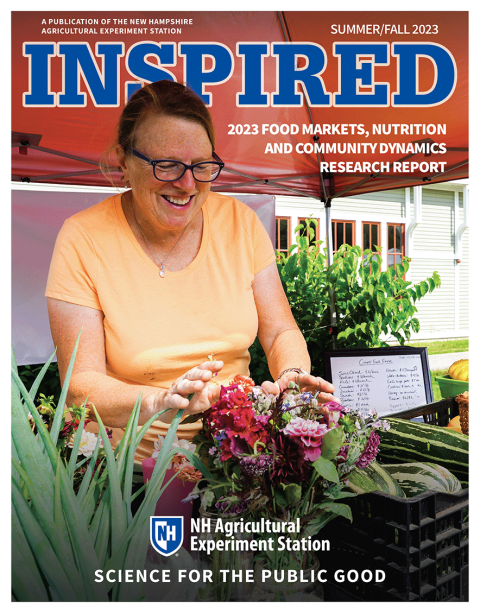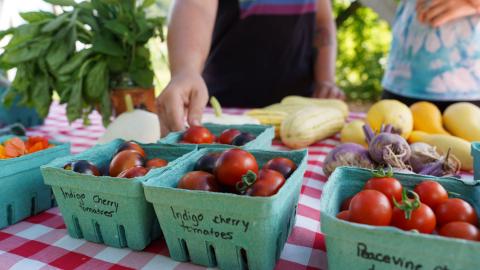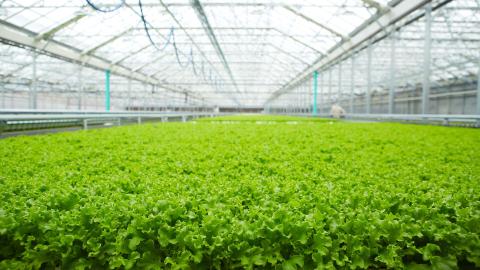NHAES INSPIRED Food Markets, Nutrition & Community Dynamics Report, 2023

Small-scale, diverse agricultural and food industries are critical to New Hampshire's economy. In 2022, agricultural directly contributed to $235 million in output and the food system led to $29.3 billion in economic benefits to the Granite State. In part, this is due to the strong farm-to-table movement in New Hampshire, which ranks at top in the nation with farms that have direct sales to consumers through nearly 150 farmers markets and farm stands and consistent participation in Community Support Agriculture farms and Community Supported Fisheries.
The proximity of agricultural operations to U.S. population centers represents a unique opportunity for both food producers and consumers in the Northeast region, but challenges remain for sustaining small-scale farming operations, responding to market trends, adapting to demographic changes and understanding healthy nutritional choices. The research briefs in this report offer a better understanding of demographic changes, eating and health choices, desire to consume foods produced in New Hampshire, effectiveness of state and federal policies, and other factors, which ultimately will provide recommendations for ensuring a healthier workforce, cost-effective stewardship of public program funds, reduced stress on the state's healthcare system, and economic sustainability for food producers and rural communities.
Read and download a pdf version of the entire publication, or check out the individual INSPIRED Food Markets, Nutrition & Community Dynamics research articles. And sign up for the NHAES newsletter to receive the latest updates on future editions of the INSPIRED research report.
Alternative Food Networks (AFNs) like farmers markets and CSAs promote sustainability and fair trade but struggle with market saturation. This study explores expanding their reach in New England by analyzing consumer behaviors and cultural influences on food preferences. Emphasizing key product attributes and cultural inclusivity, alongside public education, can broaden AFNs' appeal, aiding small farms and enhancing market penetration.
Mid-sized U.S. farms, crucial for local food supply, face market access issues. Value-based Supply Chains (VBSCs) could bridge this gap by adapting large retail systems to support these farms. Through strategic partnerships, VBSCs offer risk-sharing mechanisms, flexible market access, and shared infrastructure, enabling mid-sized farms to sustainably meet consumer demand within existing retail frameworks.
Climate change and COVID-19 stress New England's food system, emphasizing resilient supply needs. A study shows farmers diversify income with off-farm work, agritourism, and community backing, beyond just farming. Sustainable agriculture hinges on overcoming financial hurdles and rethinking farm viability, calling for joint policy efforts to bolster food system resilience.
Despite New Hampshire's high food security ranking, New England faces disparities among groups like college students with disabilities, who report higher food insecurity rates. This study at a northeastern university delves into this issue, revealing that disabled students are twice as likely to face food insecurity, underscoring the need for focused institutional support.
Research highlights the transformational "emerging adult" phase, emphasizing the critical impact of sleep patterns on young adults' long-term metabolic health. Both inadequate and excessive sleep are linked to higher metabolic syndrome severity, influencing the risk of chronic diseases like diabetes and heart conditions. Establishing proper sleep habits is crucial for future health during this formative life stage.
A pilot study on Bhutanese refugees in New Hampshire found that SNAP-Ed, a nutrition education program, did not significantly improve their diet or reduce chronic disease risks. Consuming more fruits and whole grains correlated with better health markers. Culturally tailoring SNAP-Ed to focus on these foods may enhance health outcomes for this group.
Exploring the microbiota-gut-brain axis, researchers studied the gut microbiome's role in inflammation and appetite in type 2 diabetes among New Hampshire's Bhutanese refugees. They found that microbiome diversity was reduced in those with diabetes, and specific markers linked to inflammation correlated with poorer glycemic control, offering new insights into chronic disease management in this community.
New Hampshire’s population gain over the past two years was the second largest in New England. The population gain accrued because 21,600 more people move people moved into the state than left it. This migration gain was great enough to offset a natural loss of 4,100 because more people died than were born in the state. These data underscore the importance of attracting migrants to New Hampshire and retaining the state’s existing residents.









